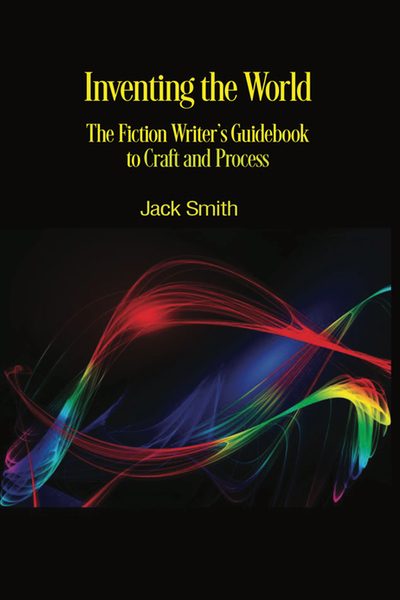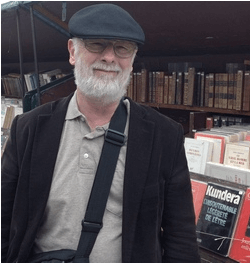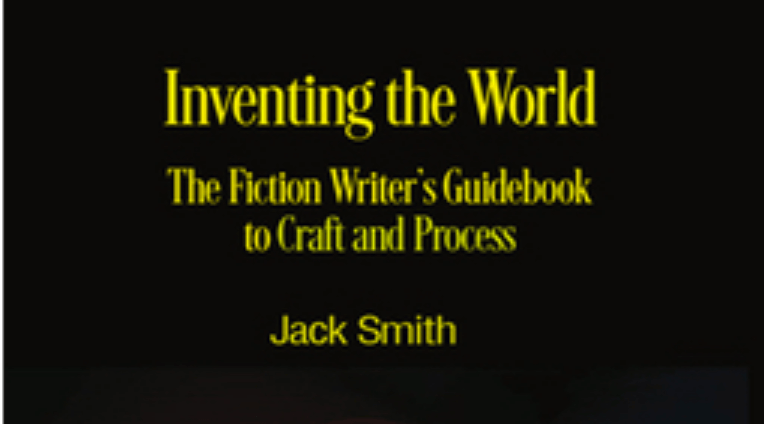On the Craft of Writing, for All Levels
By DeWitt Henry, Literary Bookmarks Editor
INVENTING THE WORLD: THE FICTION WRITER’S GUIDEBOOK TO CRAFT AND PROCESS by Jack Smith (Serving House Books, 2018). 285pp, $15.95.
 Jack Smith’s essays on “the craft and process” of writing fiction have appeared since 2010 in either The Writer or in the Novel and Short Story Writers Market annuals. Here they are collected and arranged into a thought-provoking guide, which, while primarily addressed to “early stage writers,” is also valuable to the advanced. Smith’s mission is more practical and collegial than critical or scholarly, and he has mastered a style that combines personal practice (he is the author of four novels, as well as a literary editor, critic, and writing teacher) with examples from various working professionals, whom he also asks to contribute ideas. Refreshingly these writers tend to be more from the world of literary than from that of commercial publishing, and I’m proud to be cited myself, along with Dennis Must, Susan Tepper, Geoffrey Clark, Ishmael Reed, Harriet Chessman, John Flynn, Thaisa Frank, Lise Haines, Tim Johnston, Josh Weil, Steven Schwartz, Walter Cummins, Duff Brenna, Mark Wisniewski, Ellen Sussman, Gladys Swan, Stephanie Dickinson, Laura Van den Berg, Amanda Filipacchi, Stuart Dybek, Pamela Painter, and at least fifty more, some mentioned once or twice, others several times on different topics.
Jack Smith’s essays on “the craft and process” of writing fiction have appeared since 2010 in either The Writer or in the Novel and Short Story Writers Market annuals. Here they are collected and arranged into a thought-provoking guide, which, while primarily addressed to “early stage writers,” is also valuable to the advanced. Smith’s mission is more practical and collegial than critical or scholarly, and he has mastered a style that combines personal practice (he is the author of four novels, as well as a literary editor, critic, and writing teacher) with examples from various working professionals, whom he also asks to contribute ideas. Refreshingly these writers tend to be more from the world of literary than from that of commercial publishing, and I’m proud to be cited myself, along with Dennis Must, Susan Tepper, Geoffrey Clark, Ishmael Reed, Harriet Chessman, John Flynn, Thaisa Frank, Lise Haines, Tim Johnston, Josh Weil, Steven Schwartz, Walter Cummins, Duff Brenna, Mark Wisniewski, Ellen Sussman, Gladys Swan, Stephanie Dickinson, Laura Van den Berg, Amanda Filipacchi, Stuart Dybek, Pamela Painter, and at least fifty more, some mentioned once or twice, others several times on different topics.
The book is organized into six sections: The Creative Process, Fictional Elements, Some Story Challenges (of these, “Avoiding Cliches” is my favorite, along with “Beating out the Stiff Competition in Fiction Writing”), Fiction Long and Short, Two Genres, and Interviews of Writers.
Some memorable highlights: on plot, Ishmael Reed says for him, “ideas come first. And I have been accused to lack of character development in my novels. Critics have therefore accused me of creating ‘cartoon characters.’ In my last novel, Juice!, I studied cartooning at the California Cartoon Museum. My protagonist was a cartoonist. It was a response to my critics. Given the new technology, I suspect that future novels will be graphic. Animated.” Geoffrey Clark stresses that the antagonist should be a round character—a realistic one instead of a “consciously symbolic” one. Thus the writer should be careful not “to make an antagonist totally vile and evil; you don’t want him/her to be just a kind of case study in pathology.”
On using the second person point of view: “second is related to first. Both provide immediacy. First-person speaks directly to us…Second person makes US that character…We gain a special vantage point, a much closer lens than third person, and even closer than first.” But also “With this POV, you face the reader’s possible resistance to being placed in this role.”
On editors’ stylistic preferences: where Robert Stewart of New Letters, Grant Tracey of North American Review, Brock Clarke of Cincinnati Review, and Francine Ringold of Nimrod have no preference between “dense and spare,” Sven Birkerts of Agni goes for a “rich, textured presentation.”
On Avoiding Cliches: Smith cites editors complaining of overfamiliar plots, such as the “I fell in love again plot, often after a long pulling apart and a sudden maturing”; and the need to “give characters depth, create authentic individuals on the page.” Barry Kitterman remarks: “Sometimes the problem arises from our only knowing a subject through stories we’ve read, movies we watched, or worst of all, television. So we can’t easily rise above the cliche.” Karl Harshbarger adds that “if [he] finds the story’s core itself stale, [he doesn’t] care how good the execution is.”

Given an editor such as Anthony Varallo at Crazyhorse, “publishable” isn’t enough to compete for space; he looks for the indelible. Susan Burmeister-Brown at Glimmer Train looks for stories that “linger on” after reading. Susan Mase of Nimrod seeks stories that “dazzle” and have “distinctive voice.” Mark Wisniewski, as a writer, asks whether this story has been told before? What makes it different? Does it make me uncomfortable?
In the closing interviews with prominent novelists—each of whom has achieved both literary and commercial success—Smith begins with a critical overview of the author’s work, then questions her or him on the topics and terms of craft that have been explored so far, and asks how and if they apply to their own art.
Tim O’Brien feels “a good story is a mix of the so-called real world and a much more mysterious and elusive interior world we all live in.” Asked about “theme,” Vaddey Ratner says, “It was the personal that drove me to understand the political. The personal losses and tragedies remained core. To this day when I think of my own survival, it is indivisibly linked to my father’s disappearance, to the dissolution of my family and home.” T.C. Boyle describes the “fine line between delivering information and drama” in writing his historical satires, adding that “Drama must always win out.” For Elizabeth Strout, creating complex characters is “kind of like drilling down. I’ve gotten under the top soil. Now I’ve got to go under the next layer, under the next…A lot of it’s unconscious, but as I try to think consciously, it is that sense of continually going down.” Christine Sneed thinks that ”point of view is instinctive.” Sandra Cisneros advises us not to “write about the things that you remember, but the things that you wish you could forget. Those are just huge in your heart…That’s usually where I begin…things you feel frightened to think about, things that haunt you.” Alice Hoffman finds that “Magic doesn’t have so much to do with plot as it does with voice…” And Viet Thanh Nguyen advises, “Become tough through exposure to the opinions of others, through which you will eventually learn your own genuine opinion of your writing.”
Implicit in these interviews is Smith’s awareness that the best writing breaks the rules as often as it follows them, and perhaps even more often. Writers and editors lead as well as follow tastes; and together with recommending tenacity (revise, revise!), the exploratory spirit of Smith’s detailed and wide-ranging guide is its surest mark of expertise.
Copyright 2018 Woven Tale Press LLC. All Rights Reserved.

